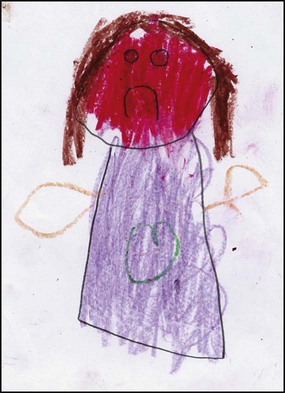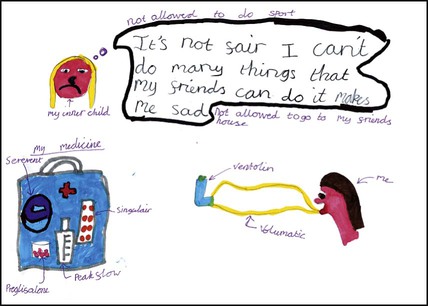Emotions and behaviour
Knowledge of children’s emotions and behaviour is important in order to:
Principles of normal development
Normal parenting
A child’s behaviour, emotional responses and personality are the end result of interplay between genetic predisposition and environmental influences. The environment provides experience from which stems knowledge, learned behaviour or emotional responses and attitudes to oneself and the world. Interpersonal relationships are major environmental factors in promoting psychosocial development and the child’s family is a principal source of these. Within the family, children should be protected, nurtured, educated and contained so that their development is supported optimally. Many societies are going through major demographic changes, including rising numbers of family breakdowns, lone-parent families and same gender parents. However, irrespective of the family structure, the essential elements of competent parenting or what is commonly referred to as ‘good-enough parenting’ are the same for all families (Box 23.1). Beyond this, the parents’ attitude towards their children and how they handle their individual children help to determine how their personalities develop.
Normal early relationships
• a particularly close relationship within which the child’s development of trust, empathy, conscience and ideals is promoted, forming a prototype for future close relationships
• the child’s primary source of comfort, providing the principal method of coping with stress (fear, anxiety, pain, etc.).
If a young child is placed in strange, impersonal surroundings and separated from the mother for more than several hours, a triphasic acute separation reaction may set in (Fig. 23.1):
• Mounting anxiety about the fact that the child’s mother fails to reappear produces distressed, irritable tearfulness (protest), which is hard to comfort
• After a day or two, this turns into a withdrawn state with no play, no interest in food and little speech or willingness for personal contact (despair)
• The child gradually cheers up from this but the close contact with the mother has been lost and the child is relatively indifferent to her when she reappears (detachment).
The selective clinging of early attachment behaviour diminishes over time so that in the second year of life children extend their emotional attachments to other family members and carers. By school age, they can tolerate separations from their parents for several hours. Children vary in their ability to do this depending on their temperament and social circumstances. For example, a child who is constitutionally apprehensive, who has an exceptionally anxious mother, or who has parents who threaten abandonment is likely to continue to cling to his/her mother for protection and comfort. A series of frightening events will tend to perpetuate clinging, which may persist well into middle childhood (age 5–12 years). This interferes with children’s capacity to learn how to cope with anxiety on their own (Fig. 23.2).
Temperament
A child born with a difficult temperament is prone to:
• predominantly negative moods – whinging, moaning, crying
• intense emotional reactions – screaming rather than whimpering, jumping for joy rather than smiling
• irregular biological functions – a lack of rhythm in sleeping, hunger or toileting
• negative initial responses to novel situations, e.g. pushing a new toy away
• protracted adjustment to new situations – taking weeks or months to settle into a new playgroup.
Cognitive style
As children grow older, their thinking style evolves from one that is concrete to one that is able to cope with abstract thought. Below the age of about 5 years, thought is fundamentally egocentric, with the child being at the centre of his world (Box 23.2). During middle childhood, the dominant mode of thought is practical and orderly but tied to immediate circumstances and specific experiences rather than hypothetical possibilities or metaphors. Not until the mid-teens does the adult style of abstract thought begin to appear.
Coping with chronic or serious illness or adversities in childhood
Children can respond to adversity, including illness, in a number of ways:
• Cognitive response – can lie anywhere along the spectrum of over-acceptance to denial, with fluctuation over time. In over-acceptance, the child may allow the illness to overtake their life resulting in more impairment than is expected for level of symptoms, and high levels of anxiety about the slightest symptom. With denial, symptoms and warning signs may be ignored and treatment poorly adhered to.
• Emotional response – to diagnosis of illness and at times of relapse, may have similarities to a bereavement reaction or reaction to loss, with shock, denial, anger, followed by acceptance and adjustment (Fig. 23.3). Such responses to a serious illness are normal as long as the child proceeds through the phases.
• Behavioural response – young children tend to regress when stressed and behave younger than they actually are. A toddler may become overactive or clingy and display sleep and feeding difficulties. Regressive responses in older children predominantly manifest as problems with toileting, academic performance and peer relationships.
• Somatic response – can include expression of worry and distress through bodily symptoms such as recurrent abdominal pain.
• Nature of illness – this includes severity, chronicity, presence of constant discomfort and demands of treatment. Children with neurological disorders involving the brain, e.g. epilepsy, are at increased risk.
• Stage of illness – for example, diagnosis, deteriorations signalled by the need for new demanding treatments or by admissions to hospital.
• Age of the child – in infancy, illness may affect attachment and developmental milestones such as autonomy and mobility. Over 5 years of age there is a greater impact on educational progress, athletic activities and achievement. In adolescence, social adjustment, individual identity, independence from the family and poor adherence to treatment become more of an issue. Prolonged separation from parents resulting from illness will have a particularly negative impact between the age of 6 months and 3 years.
• Temperament – a child who is more adaptable to new situations will fare better. In contrast, a child who from early life has been difficult to soothe will fare worse
• Intellectual capacity – brighter children generally cope better.
• Family factors – the illness can have detrimental effects on the family and family difficulties can aggravate adaptation to illness.
Adversities in the family
• Angry discord between family members
• Parental mental ill health, especially maternal depression
• Divorce (Boxes 23.3 and 23.4) and bereavement
• Emotional rejection or unremitting criticism
• Use of violence, terror, threats of abandonment or excessive guilt as disciplinary devices
• Taunting or belittlement of the child
• Inconsistent, unpredictable discipline
• Using the child to fulfil the unreasonable personal emotional needs of a parent
• Inappropriate responsibilities or expectations for the child’s level of maturity.
Problems of the preschool years
Meal refusal
An account of what goes on at a typical mealtime may reveal:
Most importantly, how much does the child eat between meals? A well-nourished child is getting food from somewhere. Not all parents regard sweets and crisps as being food. Some mothers, while concerned about their child’s apparently poor food intake, provide little variety in the child’s diet. For strategies for dealing with meal refusal, see Box 23.5. Children with faltering growth may require specialist referral if they do not respond to this advice.
Sleep-related problems
Difficulty in settling to sleep at bedtime
This is a common problem in the toddler years. The child will not go to sleep unless the parent is present. Most instances are normal expressions of separation anxiety, but there may be other obvious reasons for it which can be explored in taking a history (Box 23.6), supplemented if necessary by the parents keeping a prospective sleep diary. Many cases will respond to simple advice:
• Creating a bedtime routine which cues the child to what is required
• Telling the child to lie quietly in bed until he/she falls asleep, recognising that children cannot fall asleep to order (although that is what everyone tells them to do).
Disobedience, defiance and tantrums
Normal toddlers often go through a phase of refusing to comply with parents’ demands, sometimes angrily (‘the terrible 2s’). This is an understandable reaction to the discovery that the world is not organised around them. They also become confused and angered by the fact that the parent who provides them with comfort when they are distressed is also the person who is making them do things they do not wish to do. This seems exceptionally unfair to them. That is one reason why children play their parents up but may be fine with others. All this can exhaust and demoralise parents, not least because many people offer advice or criticism (everyone thinks themselves an expert in the area of children’s development and behaviour). The points listed in Box 23.7 can be made.









